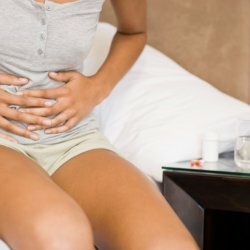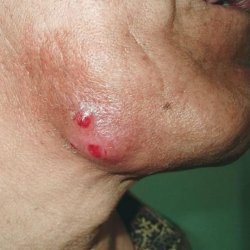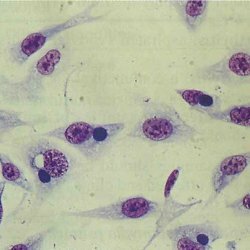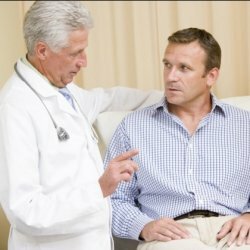What you need to know about food poisoning

Species of food poisoning
Poisoning can occur if food contains food toxins or bacteria that appear there as a result of a violation of manufacturing and storage technology. Most people try to determine the suitability of products by their smell or appearance. But, unfortunately, this is not always an effective way.
- Food poisoning. Almost any meat product can become a source of poisoning. But the greatest danger is chicken meat, as in the meat of chickens are the bacteria of Salmonella. Often people are poisoned and products made with minced meat. Therefore, for the prevention of poisoning, always buy only fresh meat in proven places and subject the meat products to the correct heat treatment. Ready meals try to use during the first day after cooking.
- Staphylococcus toxin poisoning. This type of poisoning is very common. The thing is that staphylococcus reproduces well at room temperature. It lives in dairy products, in pastries with cream and pâté.
- Food poisoning by mushrooms is the most dangerous for humans, since such poisonings affect the kidneys and liver, as well as the central nervous system. Poisoned man mushrooms need to be delivered as soon as possible to the hospital.
- Food poisoning by fish is also very dangerous for health. In the process of decomposition, the fish secrete very toxic substances that adversely affect the central nervous system and the human body. Therefore, buy fish only in the tested places and do not store it at room temperature.
- Botulism is a very dangerous poisoning. The first symptoms after poisoning can appear within an hour. The causative agent of the disease are spores of botulinum bacillus. Such spores multiply well in anoxic space, so they can be in canned food and in the lower layers of meat products. Boiling in the fight against these disputes is ineffective. Symptoms of such poisonings are very specific. The person has a sharp cutting pain in the stomach, which is accompanied by vomiting. A few hours later, a person's vision is disturbed, after another hour - speech is lost, the process of swallowing drool is broken. Gradually, muscle paralysis develops and if timely help is not provided, the person will die.
In this case, only a doctor can help, so you need to call an ambulance and hospitalize the patient as soon as possible. All that you can do in this case is to rinse the stomach.
Other types of poisoning also occur as a result of ingress of pathogenic microorganisms into the body: pathogens of dysentery, typhoid fever, salmonellosis and the like.
Symptoms of food poisoning
The first symptoms of poisoning can appear in a few hours and even a few days. As a rule, it depends on which pathogens were in the food and how many spoiled foods were eaten. As a rule, a person first has abdominal pain, then diarrhea, nausea and vomiting.
After a couple of hours the patient complains of a chill and a headache. Very often the poisoned person rises body temperature and there is an aching in the bones and pain in the muscles. In severe poisoning, fainting, nonsense and loss of consciousness are possible.
How to provide first aid for food poisoning
Unfortunately, very often food poisoning leads to disruption of the kidneys, liver and pancreas. This happens because a person does not receive first aid for food poisoning. If a person has the above symptoms, then immediately call an ambulance. And before her arrival, you need to provide first aid.
First of all you need to rinse the stomach to the victim. It is best to do this with a weak solution of potassium permanganate. But note that the potassium permanganate should completely dissolve, since even a small undissolved crystal can cause a burn of the mucous membrane of the mouth, stomach and esophagus. Manganese can be replaced with a solution of soda or iodine. To make a solution, dilute soda or iodine in water - two tablespoons per liter of water or five drops of iodine.
The stomach should be washed until the emetic masses are clear, in other words, until there is only one water left. But keep in mind that you can not wash the stomach if:
- person is unconscious - such a person can choke and vomiting may start, which he can not control;
- to the child was not executed two years - at children at such age the irritation of a root of tongue can lead to spontaneous heart stop;
- a person suffered a stroke or a heart attack - the reason why it is impossible, the same as in children, the gag reflex has a strong load on the cardiovascular system.
After washing the stomach, a person should be given a laxative. If there is nothing at hand, give him just a few spoons of plain vegetable oil - it is a good laxative. But note that the laxative should be given only if there is no diarrhea. If there is diarrhea, instead of a laxative, give the patient an activated charcoal( one tablet for every five kilograms of weight).
After all of the above, wrap a person in a warm blanket, apply a heating pad to your feet and hands and let it warm up. Be sure to water it with warm tea or milk. By the way, milk is very useful for food poisoning.
Antibiotics
Sometimes people with food poisoning take various antibiotics. But this can not be done in any case. Antibiotics in no way affect the causative agent of poisoning, but they have a negative impact on the liver and kidneys. In addition, they alter the intestinal microflora and this leads to the fact that it can not fight toxins. Antibiotics can be prescribed only by a doctor and then only after a complete examination and the delivery of tests.
Diet after poisoning
Once a person is better, he will need to stick to another special diet for a while. The first day is best to completely stop eating food, using only liquid. If vomiting has stopped, then on the second day allowed to eat rusks and broth. On the third day you can enter in the diet of cereals and soups. But remember that in the first days the food should be viscous consistency. If after poisoning it is wrong to eat, then this can lead to violations of the normal functioning of the digestive system and the digestive tract.
Traditional methods of treatment of poisoning
Such methods of treatment can be used in those cases when the patient's condition is satisfactory.
- Activated charcoal should be consumed for two days after poisoning. On the first day you need to take one tablet every half hour. On the second day, one tablet every three to four hours. Activated carbon can be replaced with enteros gel. These medications absorb toxins and remove them from the body in a natural way.
- Vitamin C also excretes toxins well. Patient throughout the day you need to take three grams of vitamin every hour.
- Dill-honey broth. For its preparation, take the dill and pour one tablespoon of raw material with a glass of boiling water. When the infusion has cooled, add one tablespoon of honey and give it to the patient. Remember that honey causes allergies, so be careful!
- Ginger removes inflammation of the gastric mucosa and removes toxins. Give the patient ginger tea. To make this tea, pour one tablespoon of ginger powder( a teaspoon of grated fresh ginger) with a glass of boiling water and let it drink to the patient. During the day you need to drink at least one liter of such tea.



